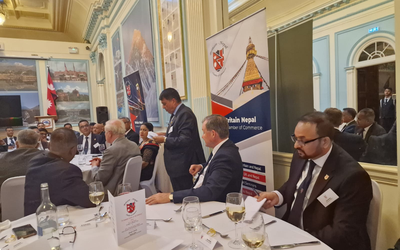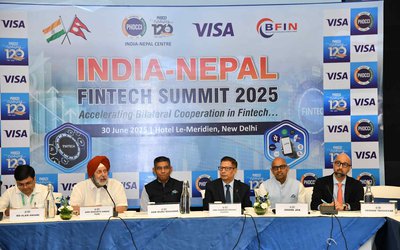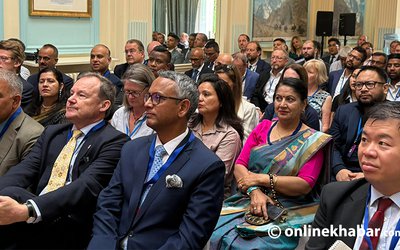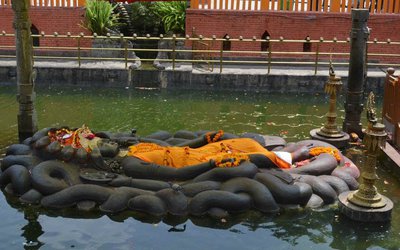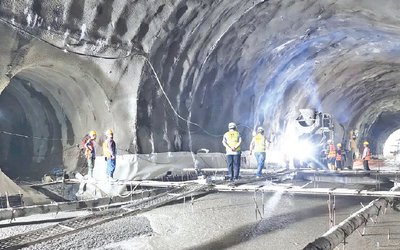
Minister of Energy, Water Resource and Irrigation Pampha Bhusal announced that all Nepalese will receive dependable and quality electricity within two years. She said that the government is pushing for total electrification of the country implementing a clear strategy and plan to reduce the dependency on oil.
She said that the government is providing free electricity to the consumer who consumes 20 units of electricity. Out of 5.1 million consumers, 2.6 million consumers are receiving the benefits under this scheme.
She said that the government has reduced up to 75 percent in tariffs used for irrigation purposes. After providing the subsidy, the per-unit charge for the electricity use in irrigation cost Rs. 2. She also said that the government is reducing the tariff to encourage citizens to use electricity for cooking.
Minister also said that the government removes the demand change in irrigation and drinking water. She also said that the government has reduced the 20 percent tariff in the last two years.
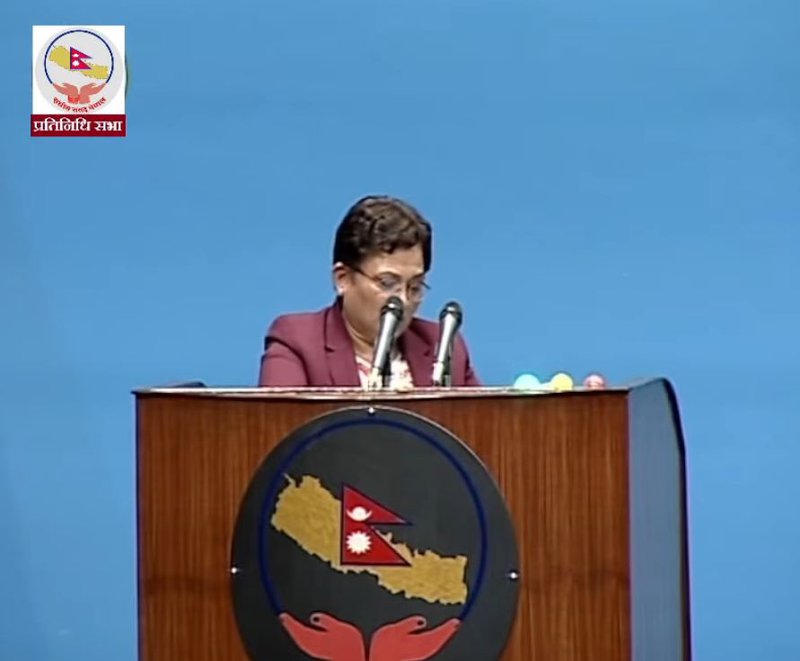
Minister Bhusal also said that the internal consumption of electricity has increased by 20 percent due to the implementation of the working procedures. Currently, per individual consumption of electricity are 330 units. She also said that between 700-1000 MW of electricity will be added to the system from this year.
Current State
Minister Bhusal’s statement and the country’s reality are different. Just a day after minister Bhusal’s words, NOC, On July 2, urged the government and citizens to prepare to face the worse energy crisis in the history of Nepal. NOC said that the supply of petroleum products and LPG will be completely stopped at any time because of lowering the stocks.
With the statement, the public is in panic and urban dwellers have started hoarding petroleum products including LPG. As people need an immediate solution, and the minister asks for two years to meet demand and supply, how will the government manage the crisis is a big question.
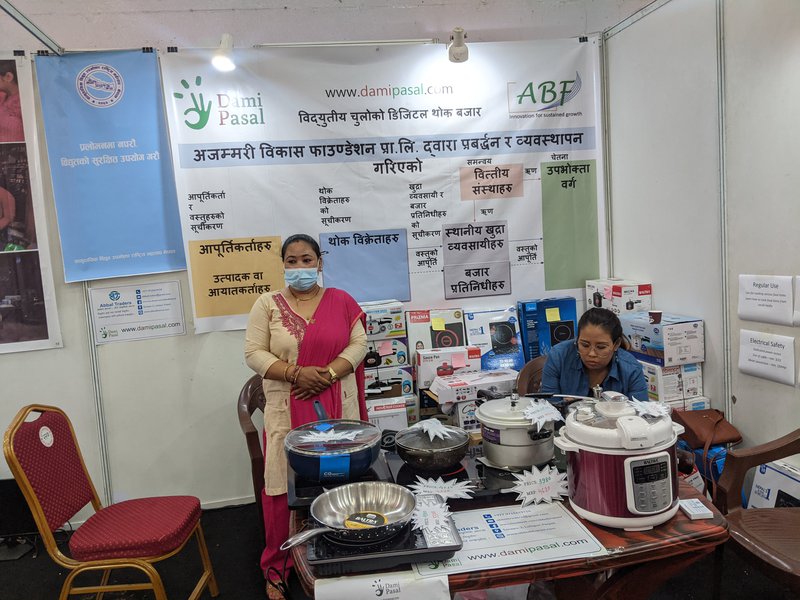
Although the government has started to take initiative to energy transition by shifting to electricity and renewable energy to minimize the import of petroleum products, it is like a race against time.
Depending on biomass and renewable energy like biogas, rural populations are in much safer positions in cooking energy. However, there will be catastrophes in the life of overwhelming urban populations who have depended upon the LPG.
Although electricity is available as an alternative for the urban population, the distribution system is old and undependable. Thus the quality of electricity is poor. In this current scenario, the urban population has to face a harsh situation in cooking.
Campaign Against LPG
Minister for Energy, Water Resources and Irrigation, Bhusal, has said that the government is conducting a campaign under the slogan 'Let Us Abandon Foreign LPG, Use Domestic Electricity' with the objective of gradually replacing the use of LPG with electric cooking stoves.
Presenting her policy document in the Upper House, Minister Bhusal stressed that the energy, water resources and irrigation sectors have a special role to play in the country's overall development.
She informed the Upper House that works were being carried out with the goal of preparing a plan and implementing it to provide reliable and quality electricity services to all citizens within the next two years.
In this connection, Minister Bhusal mentioned that around 2.6 million indigent customers of the about 5.2 million customers throughout the country were benefiting from the policy of providing free electricity to such customers consuming a maximum of 20 units of electricity in a month.
The tariff for electricity used in irrigation has been determined at two rupees per unit in line with the policy of providing up to 75 percent concession in electricity for irrigation, she added.
The Minister for Energy further said that the household electricity tariff has been decreased for encouraging the use of electric ovens.
Likewise, she said the demand fees have been removed for drinking water and irrigation. According to her, the energy tariff toward drinking water has been reduced approximately by 50 percent.
"The electricity tariff has been decreased by 20 percent two times in the past two years when the prices of most of the goods and services are increasing," said Energy Minister Bhusal.

The Energy, Water Resources and Irrigation Minister informed that the 1,200 megawatts capacity Budhigandaki Hydroelectricity Project is to be moved ahead in the 'company model'.
Stating that it was necessary to construct the reservoir-type projects in view of the energy security, she said works on distribution of compensation of land acquired for the reservoir-type project are almost completed. The Budhigandaki Project is near the load center.
She mentioned that special priority has been given to the construction of sub-station, transmission and distribution lines for providing quality electrical services as per the policy of using energy for a bright future using electric equipment and expanding drinking water with the use of lifting, developing agriculture through irrigation and operation of transport and industrialization by using electricity.
Former minister Ganesh Shah holds the view that this is the right time to switch from Petroleum products to clean energy. “Our foreign currency reserve has already dwindled so much and Nepal cannot afford it for long,” said Shah.

Full electrification in three provinces by next year
Minister Bhusal said that works are being carried out to have full electrification in Madhes, Bagmati, Gandaki and Lumbini provinces in the coming year itself.
She added that full electrification would be carried out in Province no 1, Karnali and Sudurpaschim provinces within the next two years by concluding a multi-year contract for the expansion of the distribution system in these provinces.
Minister Bhusal underscored that the budget has been allocated to prioritizing rural electrification and renewable energy development in the next fiscal year.
Minister for Energy, Water Resources and Irrigation, Pampha Bhusal, has said that the government is conducting a campaign under the slogan 'Let Us Abandon Foreign LPG, Use Domestic Electricity' with the objective of gradually replacing the use of LPG with electric cooking stoves
Energy Scenario
According to CBS, Firewood is used by 76.5% of rural and 37.9% of urban households. The use of LPG gas is the second most used cooking source in Nepal, urban 53.3% and rural 8.7% are using LPG gas.
Despite numerous efforts by the government and other actors to speed this transition, energy data spanning the years 2000–18 reveal that 69% of households nationwide still rely on solid fuels for cooking. The proportion of solid-fuel users is especially high in rural regions, reaching 80%. According to CBS2016, Firewood is used by 76.5% of rural and 37.9% of urban households. The use of LPG gas is the second most used cooking source in Nepal, urban 53.3% and rural 8.7% using LPG gas.
Nepal Oil Corporation says demand for LPG has swelled to 50,000 tones monthly. Demand for LPG has grown despite Nepal earning the status of an energy surplus country. The corporation says that currently 3.5 million cylinders are sold in the market monthly.
“As Nepal is heading towards a major energy crisis, the time is ripe to switch to clean and renewable energy. By using electric cooking, we can reduce the use of LPG drastically in urban areas,” said Mohan Das Manandhar, a policy expert and executive director of Niti Foundation, a local-based non-profit organization.
Status Of Electricity
According to the economic survey 2021/22, Nepal’s access to electricity reaches 94.0 percent including renewable energy. Nepal installed capacity of electricity reaches 2205 MW by April 2022 increase of 30.9 percent compared to the same period of the previous year. The total installed capacity of electricity was 1685 MW By July 15, 2021. Per person, electricity consumption reaches 270-kilowatt hour.
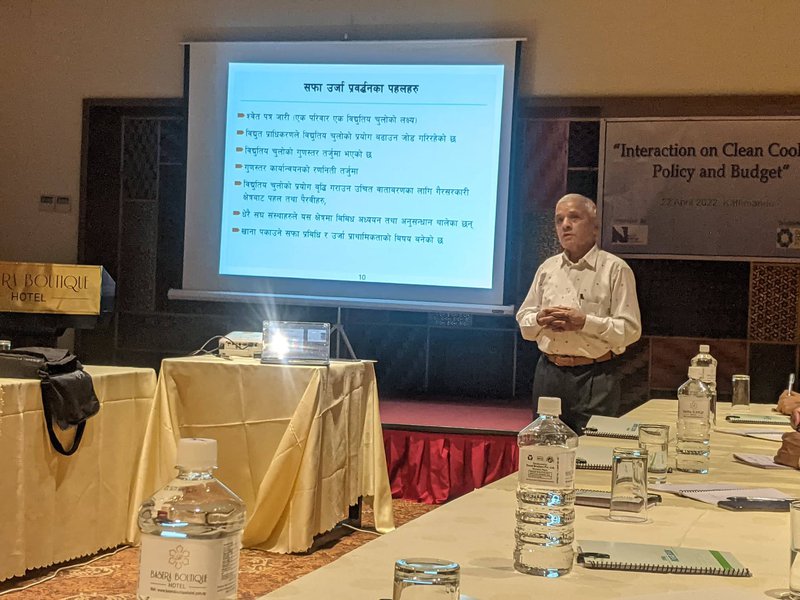
Out of the total generation connected to the national grid, the contribution of the private sector is 1440 and 581 by NEA. Out of 2205 MW, 2022 MW by hydropower, 49.76 MW by solar, 53.4 MW Thermal, 74 MW by Alternative Energy Promotion Center and 6 MW by Sugar Mill factories.
The household consumer of NEA reaches 5.2 million by March 14, 2022, except 580,000 Community Users. By March 200, electrification reaches 26 districts and it will reach 34 by July.
6.9 percent of the population has access to renewable energy sources it was just 3.2 percent by 2021 July. The government has installed 1733 units of bio-gas by March 2022. Similarly, 13455 improved stoves were also installed during this period.
By March 14 of 2022, access to electricity has reached 94 percent compared to 93 percent by July 14, 2021.
By March 13, 2022, 99.66 percent of the population in Madhesh has access to electricity followed by province 1 with 96.95. Bagmati province covers 95.91, Gandaki 95.68, and Lumbini 9491. Karnali province has the lowest number of people to have access to electricity just 43.87 and Sudurpaschim has 71.07.
With surplus electricity at hand and the availability of improved biogas technology within the country, promoting biogas, electricity and other renewable energy can reduce Nepal’s dependency on petroleum products and help Nepal to control foreign currency depletion.
“Nepal is now in a quite comfortable position in terms of electricity generation through hydropower. We have now surplus electricity and we can use it massively to convert our LPG-based kitchen,” said Dr. Jagan Nath Shrestha, professor at the Institute of Engineering.
Initiative By Federal, Province and Local Governments
Realizing the urgency, federal, provincial and local governments have already announced several new schemes to reduce the dependency on LPG and switch to electricity and renewable energy. However, it is a race against time. NOC has already made it clear that the import and supply of petroleum products will stop at any day and at any time.
The federal cabinet has given permission to install 99000 smart meters and NEA has been installing it. Targeted to poor marginalized communities, NEA is providing Rs.3000 subsidy to persons to install meters.
Presenting a federal budget, the Minister of finance has announced that the government has made arrangements to provide one cooking stove to each family at the local level.
The annual budget also said that those families who do not have access to electricity will be given smokeless stoves under the smoke-free kitchen campaign.
Similarly, all seven provincial governments have also toed their strategy with the federal government on energy transition. Province 1 in its provincial policy and programs announced to promote of electric cooking stoves and electric vehicles to displace the petroleum projects and LPG.
The policy says electricity will be provided to all the citizens of province 1. For this, private and foreign investment will be attracted to build hydropower projects up to 20 MW.
As mentioned in the annual policies and program, the budget says electric cooking will be encouraged to displace the LPG. In close collaboration with Government, NGOs and the private sector, a charging stations will be built for electric vehicles.
Madhesh Pradesh has announced policies for the promotion of renewable energy through public-private partnerships. The provincial government allocated the budget to provide subsidies to save the health of poor and marginalized populations by

replacing the use of cow dung in cooking with renewable energy.
Bagmati Provincial government also proposes to provide electricity to all through rural electrification, mini-grid, solar and other sources. Annual policies say it will work in collaboration with the federal government and Nepal Electricity Authority under the slogan of Bagmati Province Total light province.
Gandaki Province has a clear announcement about the need to promote electric coking to replace LPG. The provincial government says that electric stoves will be provided to displace LPG. The Government says that the province will provide incentives to the private sector to produce electric stoves in the province.
In its annual policies and program, the Lumbini Province government has announced that all provincial government offices will start to use electric cooking and displace the LPG. The government says this will be expanded to household levels later on. The province also plans to support the upgrading of transmission lines and distribution systems to make electricity supply reliable and qualitative.
The province also announces to provide electric stoves free of cost to the students pursuing Master's degrees within the province. By the end of July, all the provincial Ministries and departments will remove LPG from their canteens.
Karnali provincial government also announces to encourage renewable energy like solar, Bio-gas and wind to increase access of clean energy in the province. As in the past, the government will provide incentives to families to replace traditional energy and LPG. The annual budget of Karnali Province allocated budget to launch the campaigns. Under this, bio-gas, micro-hydro, solar and wind power will be constructed.
In its annual program, Sudur Paschim Provincial Government has said that the province will displace the use of LPG encouraging electric cooking. The province also said that electric vehicles will be promoted in the province.
The annual budget of Sudur Paschim Province has allocated budget to install charging stations for electric vehicles. The budget said the private sector particularly petrol pumps is encouraged to install charging stations in collocation with NEA. Similarly, the province also announced providing subsidies for electric stoves and electric vehicles.
Most local governments do have similar programs and plan to minimize the use of LPG and petroleum products. Purushottam Ghimire, a Policy expert who has been closely monitoring the policies, programs and budgets of federal, provincial and local governments, said that all the governments have shown the commitment and willingness to reduce the use of LPG and petroleum products. Ghimire holds the view that this is a positive part of the ongoing crisis and to change the mode of energy.
“We have already started a program to replace LPG by providing induction in some rural municipalities in southern Lalitpur district. Initially, we have distributed induction in subsidies rate in the entire household of Mahakal Rural Municipality in Lalitpur. This can be extended in other areas as well. However, we need to invest some money in the improvement of household wiring and rural distribution system,” said Dilli Ghimire, Executive Director, and Nepal Energy Foundation.
Karuna Bajracharya from Clean Energy Alliance said that they are ready to support concerned governments and work in collaboration with the private sector and NGOs to promote electric cooking.
Open PPA For The RoR Projects
Announcing to spend money to improve the quality of electricity by investing money in improving the transmission and distribution system, the government has also announced to increase in the production of electricity.
Waited for years to construct the hydropower projects, private investors have a sleigh of relief as the recent government decision to increase the limit (quota) of the Power Purchase Agreement (PPA) of Run of the River Type Hydropower Project (ROR) reports Nepal Energy Forum online.
A meeting of the Council of Ministers on Tuesday decided to maintain the 35 percent quota for 15,000 MW at 45 percent, said a source close to the Prime Minister and Council of Ministers.
NEA can sign PPA for an additional 1,500 MW project along with this decision. With this decision, the quota for reservoir projects has been reduced and the quota for ROR has been increased.
Till now, 35 percent PPA quota has been fixed for reservoir projects. Now it will be reduced by 10 percent to 25 percent or 3750 MW. The quota for picking is 30 percent or 4500 MW.
At present, 1,825 MW projects are under construction through PPA while 2,141 MW projects are awaiting PPA through connection agreement. Similarly, 7200 MW projects with electricity connections are waiting for PPA by applying to NEA.
NOC WARNING
After an unabated increase in the total loos, Nepal Oil Corporation (NOC) has written a letter calling the attention of the prime minister and the minister of Industry Commerce and Supply.
NOC has warned that the supply of petroleum products will disrupt if the government does not provide the necessary resources.
Executive Officer of NOC Umesh Prasad Thami urged the government either to allow it to raise the price of petroleum products or provide the necessary money to it to maintain an

uninterrupted supply. Otherwise, there will be a crisis.
He also suggested working out a plan for the reduction of the consumption of petroleum products. There is no alternative other than to reduce consumption. NOC’s loss will reach over Rs. 55 billion by the end of this fiscal year.
NOC said that it is due to a payment of over Rs. 30 billion to Indian Oil. Thami warned that the situation lands in a grave situation in case the government fails to provide money.
NOC Suggest Several Ways to Reduce the consumption of Petroleum products. NOC proposes 5 liters of petrol for motorbikes and 20 liters for the car.
After facing a severe financial crisis, NOC in its written letter to the government proposes 10 points agenda. One of suggestion is to reduce the supply of petroleum products to motorbikes and private cars.
Spokesperson Binitmani Upadhyaya said that the board meeting held on Monday approved its 10 points proposals to reduce consumption.
Issuing a quota of 5 liters for two-wheelers and 20 liters for small care is one of the main suggestions.
Similarly, NOC also suggested stopping all vehicle movement in the city. It also suggests revising the mandatory official holiday on Sunday. It also suggests a total ban on the import of diesel and petroleum vehicles. Operation of private cars and two-wheelers in full capacity, the introduction of odd and even for all vehicles, restriction of the vehicle in short distance and operation of good carries in full capacity.
NOC also suggests the government take necessary steps to maximize the use of electricity in the household and electric cars.
He said that the consumption of petroleum products had drastically reduced during the two days holiday last moths. After the removal of the holiday, it starts to increase. NOC warned that the country will face a very grave situation of energy crisis.
Conversion Of Petrol Vehicles To Electric
From cooking gas, the government is now working to table a bill to allow the conversion of petroleum vehicles to electricity. Ministry of Physical Infrastructures and Transport is drafting a law to allow this with an aim to convert 60 percent to electricity by 2030.
Senior Divisional Engineer of the Ministry Shanker Dhami said that the drafting of the law on the conversion of vehicles is the last stage. He said that converting the old vehicles to electricity will appropriate step in many ways including saving foreign currency.

Conversion of vehicles is the only way to meet the target of making 60 percent of vehicles electric. He said that the government is also promoting the import of electric buses for public transport.
“The current crisis has taught us a lesson and the importance of electric vehicles,” said Dhami. “Over 1000 small tempos are serving almost 200,000 people in the valley. Similarly, Sajha also launched electric vehicles in the valley.
Policy Intervention
Although the federal government backed by the National Planning Commission, Ministry of Energy, Water Resources and Irrigation and Ministry of Finance has been working to develop guidelines, it is still uncertain when will it come out?
At a time when all provincial levels including many local governments have already announced to implement the programs and develop strategies to replace the LPG, publishing a certain level of guidelines from the federal level would be meaningful.
“Federal government has to announce some policy level guidelines show its serious concern on the energy crisis. The reduction of LPG can be successful only working in collaboration between federal, provincial and local government, NGOs and private sector,” said Policy expert Manandhar.
Although there are rushes of different sectors to avoid a major energy crisis, it seems that the country is racing against time. The government is also accelerating the speed of electric cooking. In the long term, there needs to develop long-term energy security policies and their implementations.

Keshab Poudel
Poudel is the editor of New Spotlight Magazine.
- ERC Nepal Is Focused On Expanding Distribution And Transmission To The Private Sector: ERC Chair Dr. Dhital
- Jul 06, 2025
- FOURTH PROFESSOR Y.N. KHANAL LECTURE: Nepal-China Relations
- Jun 23, 2025
- Colonel JP CROSS: Centenary Birthday
- Jun 23, 2025
- BEEN: Retrofitted For Green
- May 28, 2025
- GGGI has been promoting green growth in Nepal for a decade: Dr. Malle Fofana
- May 21, 2025
